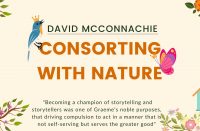“There are three things I have learned never to discuss with people: religion, politics, and the Great Pumpkin.” Charlie Brown
“There are three things I have learned never to discuss with people: religion, politics, and the Great Pumpkin.” Charlie Brown
The great pumpkin shortage of 2011 ravaged the northeastern US and most of eastern Canada. Was Hallowe’en on the verge of just not happening? It was like the premise for a Disney film starring Tim Allen. In reality, the devilish combo of Hurricane Irene and a pumpkin crop fungus caused the shortage. What or who was to blame – global warming, monocultural farming, GMOs, all of us?
The short-term solution to the pumpkin crisis of 2011 was an agricultural relief mission courtesy of western Canadian’s hardworking farmers for many. Local growers in areas like Smoky Lake, Taber and Airdrie, Alberta managed to keep their patches on track and still produced the monster pumpkins that have made Smoky Lake’s annual Great White North Pumpkin Fair and Weigh Off famous, while also providing their eastern brethren with the jack-o-lantern raw materials needed to pull off another successful Hallowe’en back east.
It may be worth revisiting this “crisis” because it will inevitably happen again and should serve as a wake-up call for all of the ghosts and goblins across Canada. This temporary agricultural production blip inspired lots of impromptu solutions for replacing jack-o-lanterns that ranged from the crafty (paper mache and vellum) to the resourceful (alternative fruits, vegetables and ceramics) to the technologically innovative (Etsy had lots of cool alternative design ideas floating around that were waste-free including a solar-powered glass jack-o-lantern).
The truth of the matter is that growing and harvesting pumpkins to carve up, set out and then toss aside a few days later is a tradition that may be worth questioning. Sustainable design suggests that we look at the lifecycle of any object or resource from “cradle to grave.” There is also a renewed effort to take this further and design objects from “cradle to cradle,” as Bill McDonough and Michael Braungart taught us back in 2002. Lifecycle analysis, industrial symbiosis and other analytical methodologies give us the intellectual tools needed to challenge our throw-away culture.
So what to do about dear old Jack? The numbers are daunting. Over one billion pounds of pumpkins are produced in the US each year alone, but because very few pumpkins are eaten, most discarded jack-o-lanterns are just thrown into waste bins as biocrud. And how much human labour and embedded energy in the form of fuel is spent hauling around pumpkin carcasses following the first trash pick-up day after Hallowe’en, too? It’s a cultural problem as much as it is an ecological one.
A University of Nebraska website advocates using pumpkins as a source of energy and protein for beef cattle to keep pumpkins out of waste bins and in the food chain. Some zoos advocate bringing jack-o-lanterns to the zoo after Hallowe’en to feed their animals and to teach kids a lesson in cradle-to-cradle thinking. Imagine your kindergartener knowing she will be feeding her jack-o-lantern to an elephant! That’s cool. I have seen images of bison in Alaska feasting on fields of discarded jack-o-lanterns. The possibilities are limitless as long as we remember that pumpkins are still basically food.
Some scientists advocate converting pumpkins into bioenergy. As Matthew Loveless writes for the US Department of Energy, the millions of pounds of pumpkins that result from seasonal decorations are treated quite differently in places like Oakland, California, thanks to the pioneering work of the East Bay Municipal Utility District (EBMUD). Loveless explains, “A ton of food waste provides about 367 cubic meters of gas, and digesting 100 tons of food wastes five days a week can generate enough electricity to power 1,000 homes.” Once the food waste has been digested, the remaining solids can make great natural fertilizer, so they can be re-used to get next year’s pumpkin crop started. The US Energy Department is working together with industry to develop and test integrated biorefineries, industrial centers capable of efficiently converting plant material into affordable biofuels, biopower and other products.
There are also always home DIY methods for re-using pumpkins that do not require the US Dept. of Energy’s help. Recipes for how to eat more pumpkin in more forms – pumpkin smoothies, pumpkin butter, pumpkin curries and pumpkin seed brittle are just a few of the ways to repurpose Jack’s nutritional value for ourselves. And even pumpkin facials are recommended for those who want reach a little deeper into their pumpkin usage.
What about pumpkins as creators of event spaces? New cultural rituals such as pumpkin chunking competitions including the World Championship Punkin Chunkin event, held annually in Delaware, tell us that we want much more from these orange gourds and their carbon capital. While pumpkin hurling events are usually held in advance of Halowee’en, there is at least an acknowledgement that there are deep yearnings for other uses out there – even if that just means being catapulted and destroyed for now. It’s a start. Yes, Charlie Brown, there is a Great Pumpkin after all, and he can be catapulted.
Some of the new traditions for jack-o-lanterns have even created exciting new cultural events. Neighbourhoods across Canada, like Toronto’s Sorauren Avenue Park, come together the night after Hallowe’en to gather and relight their Jack-o-lanterns collectively in a shared public space that gives Jack one more run at life. The Sorauren Pumpkin Parade has inspired similar events in places like Montreal (Parade des Citrouilles) and beyond. In Ithaca, New York, the locals gather and line the edges of Lake Cayuga with their jack-o-lanterns beaming under the glow of a harvest moon after Hallowe’en has ended. It’s a collective visual experience that is quite a thrill to behold.
The sad truth is that the tail end of the jack-o-lantern’s doomed lifecycle is almost always wasteful, and the idea of tossing hundreds of thousands of pounds of unused resources into the trash should truly haunt us. Don’t get me wrong – Hallowe’en is my favourite holiday. It grants children an evening of pre-sanctioned sugar-coated vice and translates “fun” into chocolate.
But reconsidering the pumpkin as a valuable food resource, an energy source or even an excuse to come together as a community might be the best way to update our conceptualization of Hallowe’en and the venerable role of the jack-o-lantern. Rituals change over time and I hate to say it, but it may be time to reconsider this pumpkin thing with a new twist that needs a little more sustainable thinking. Jack deserves a second life. Happy Hallowe’en.
More tips on minimizing the impact of your jack-o-lantern over at Grist.
Eric Nay is an architect, designer, artist and a professor at OCAD University. His blog, Made in Canada, profiles examples of Canadian design innovation, including sustainable buildings and design, craft practices and innovative businesses across the country.













